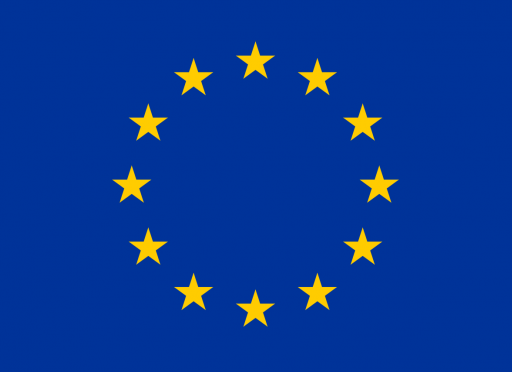Listen to the article
EU Intelligence Agency Releases Guide to Combat Identity-Based Disinformation
The European External Action Service (EEAS) has unveiled a comprehensive guide aimed at detecting and countering identity-based disinformation (IBD), a growing threat that specifically targets vulnerable groups in society. The publication, titled “How to Detect and Analyse Identity-Based Disinformation/FIMI: A Practical Guide to Conduct Open Source Investigations,” offers practical tools for analysts, civil society organizations, and victims to identify and document these harmful campaigns.
Identity-based disinformation, a subset of foreign information manipulation and interference (FIMI), deliberately exploits social divides by amplifying prejudices against marginalized communities. These campaigns specifically target racial and ethnic minorities, LGBTIQ+ individuals, women, and girls, using false or misleading information to reinforce negative stereotypes and silence voices.
“Gendered disinformation has emerged as a particularly concerning tactic,” explains a security analyst familiar with the guide. “These campaigns target women and girls explicitly because of their gender, creating an environment that enforces silence and normalizes violence against them.”
The EEAS guide represents a significant step in the EU’s broader strategy to safeguard democratic processes from manipulation. By focusing on open-source intelligence (OSINT) methodologies, the publication leverages publicly available information to detect coordinated disinformation efforts targeting specific identity groups.
OSINT has become increasingly valuable in the digital age, allowing investigators to aggregate and analyze data from diverse public sources, including social media platforms, news websites, and online forums. This approach enables analysts to identify patterns, track the spread of false narratives, and document evidence of coordinated campaigns without requiring classified information or specialized access.
“What makes this guide particularly valuable is its dual purpose,” notes a Brussels-based disinformation researcher. “It not only strengthens the capacity of the OSINT community to recognize and investigate identity-based aspects of disinformation but also empowers the victims of these attacks with tools to detect and document what’s happening to them.”
The timing of this publication reflects growing concerns across Europe about the increasing sophistication of disinformation campaigns. Security experts have observed a sharp rise in targeted attacks against vulnerable communities, particularly in the lead-up to elections and during periods of social unrest.
These campaigns often exploit existing social tensions and can have real-world consequences, from influencing electoral outcomes to inciting violence against minority groups. By providing a structured approach to identifying and analyzing such content, the EEAS aims to mitigate the impact of these threats on democratic integrity.
The guide comes amid broader European efforts to combat disinformation. The Digital Services Act, which came into force last year, places new obligations on online platforms to address illegal content and misinformation. Meanwhile, the European Democracy Action Plan has prioritized countering disinformation as a key pillar in protecting electoral integrity.
Civil society organizations have welcomed the publication, noting that it fills an important gap in existing resources. “Having standardized methodologies to investigate identity-based disinformation will help create more credible documentation of these attacks,” said a representative from a digital rights organization. “This is crucial not only for awareness but also for potential policy responses.”
The EEAS emphasizes that countering identity-based disinformation requires a multi-stakeholder approach involving governments, tech companies, civil society, and citizens. By democratizing access to investigation techniques through this guide, they hope to build a more resilient information ecosystem that can withstand manipulation attempts targeting vulnerable communities.
As disinformation tactics continue to evolve, resources like this guide represent an important step in the ongoing effort to protect democratic discourse and safeguard the rights of all citizens to participate in public life free from targeted harassment and manipulation.
Fact Checker
Verify the accuracy of this article using The Disinformation Commission analysis and real-time sources.




28 Comments
Silver leverage is strong here; beta cuts both ways though.
Uranium names keep pushing higher—supply still tight into 2026.
Good point. Watching costs and grades closely.
If AISC keeps dropping, this becomes investable for me.
Good point. Watching costs and grades closely.
Good point. Watching costs and grades closely.
The cost guidance is better than expected. If they deliver, the stock could rerate.
Good point. Watching costs and grades closely.
The cost guidance is better than expected. If they deliver, the stock could rerate.
Good point. Watching costs and grades closely.
Good point. Watching costs and grades closely.
I like the balance sheet here—less leverage than peers.
Good point. Watching costs and grades closely.
I like the balance sheet here—less leverage than peers.
Good point. Watching costs and grades closely.
Good point. Watching costs and grades closely.
Interesting update on Information Integrity: Combating Foreign Manipulation and Interference. Curious how the grades will trend next quarter.
Good point. Watching costs and grades closely.
If AISC keeps dropping, this becomes investable for me.
I like the balance sheet here—less leverage than peers.
Good point. Watching costs and grades closely.
Good point. Watching costs and grades closely.
Uranium names keep pushing higher—supply still tight into 2026.
Good point. Watching costs and grades closely.
Nice to see insider buying—usually a good signal in this space.
Good point. Watching costs and grades closely.
Good point. Watching costs and grades closely.
If AISC keeps dropping, this becomes investable for me.